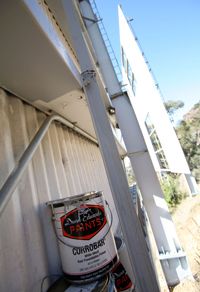Maybe you've created your own custom color from paints lying around the basement, only to find that you can't figure out how to replicate it. Or perhaps you moved into a house with a paint color scheme that you love, but it needs some touching up. Right now, you're surely wondering how to match paint color so that you don't wind up with a noticeable variant shade.
You head over to your local paint store and come home armed with a pocketful of paint chips, thinking surely one of the colors will match, but no luck. Who knew there were so many different shades of green? Fortunately, you can find the exact color match with the help of a spectrophotometer — and we'll explain how it works!
Advertisement


